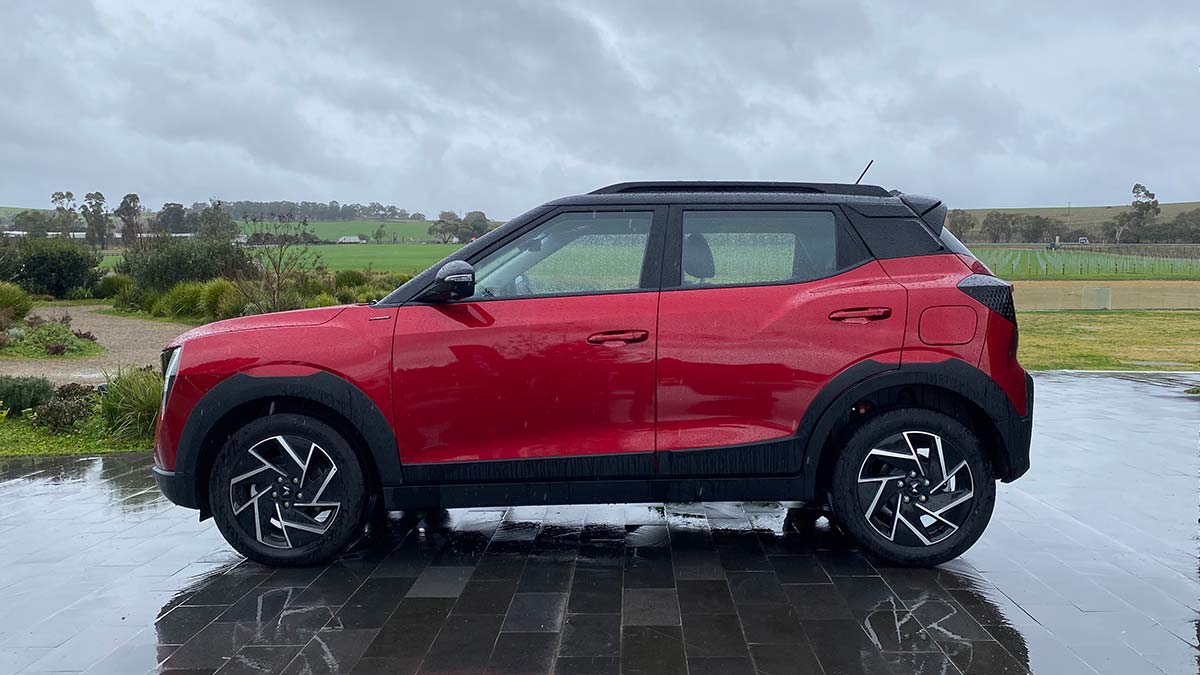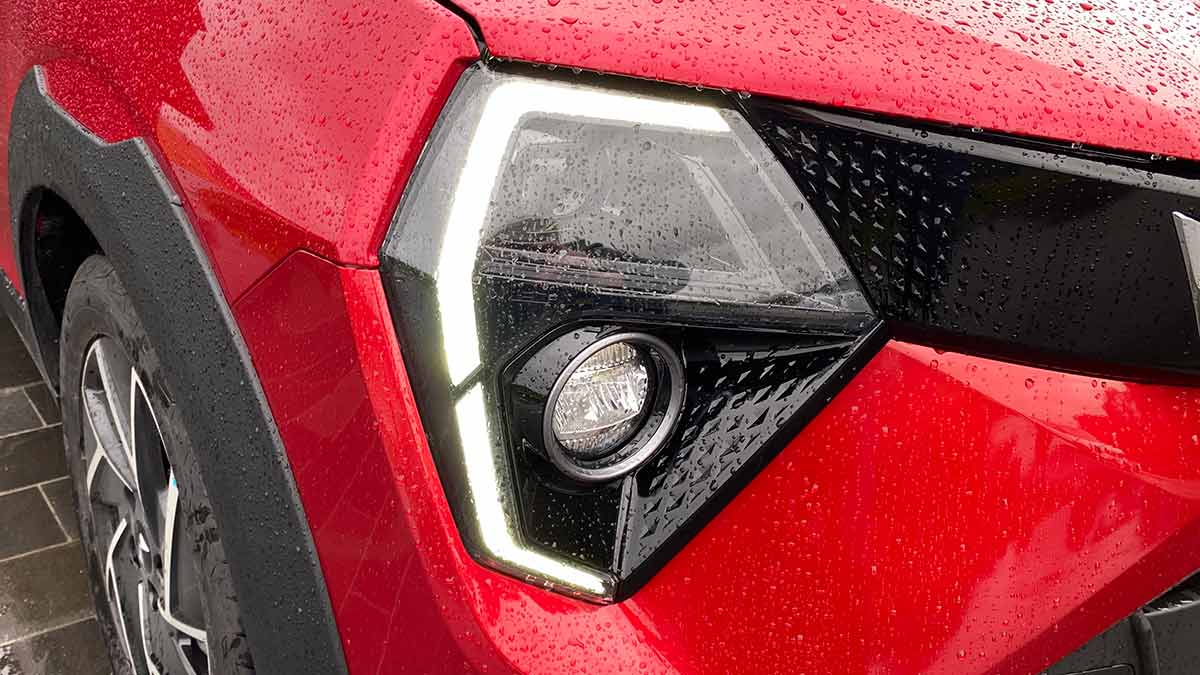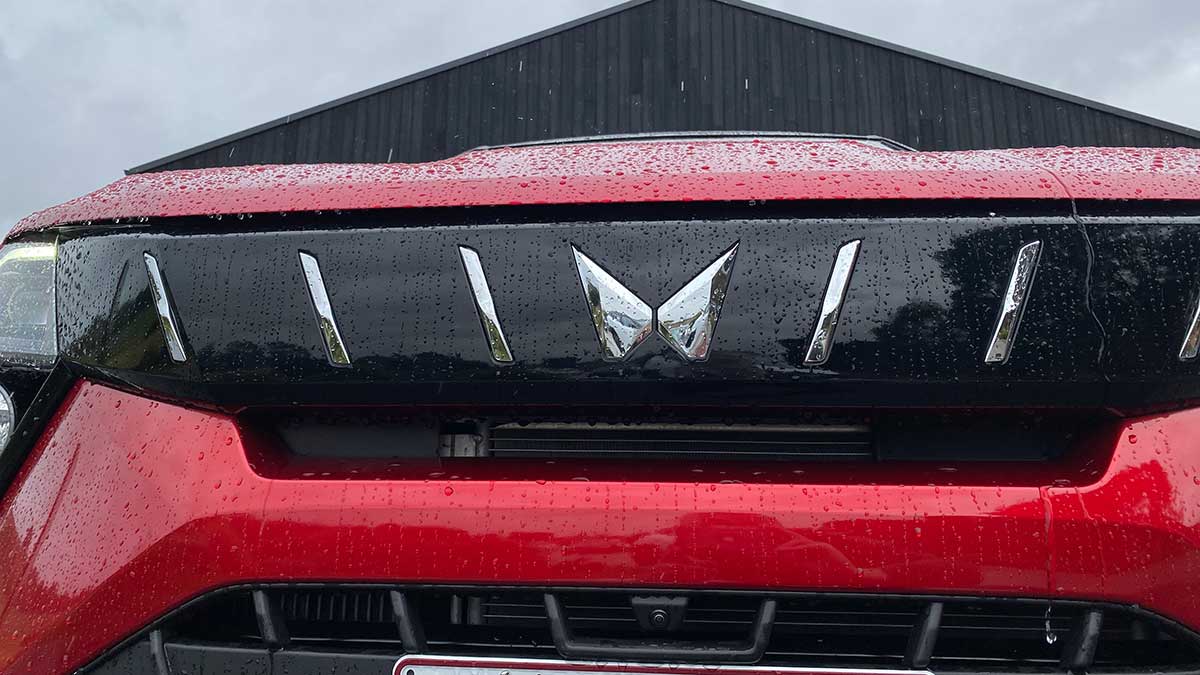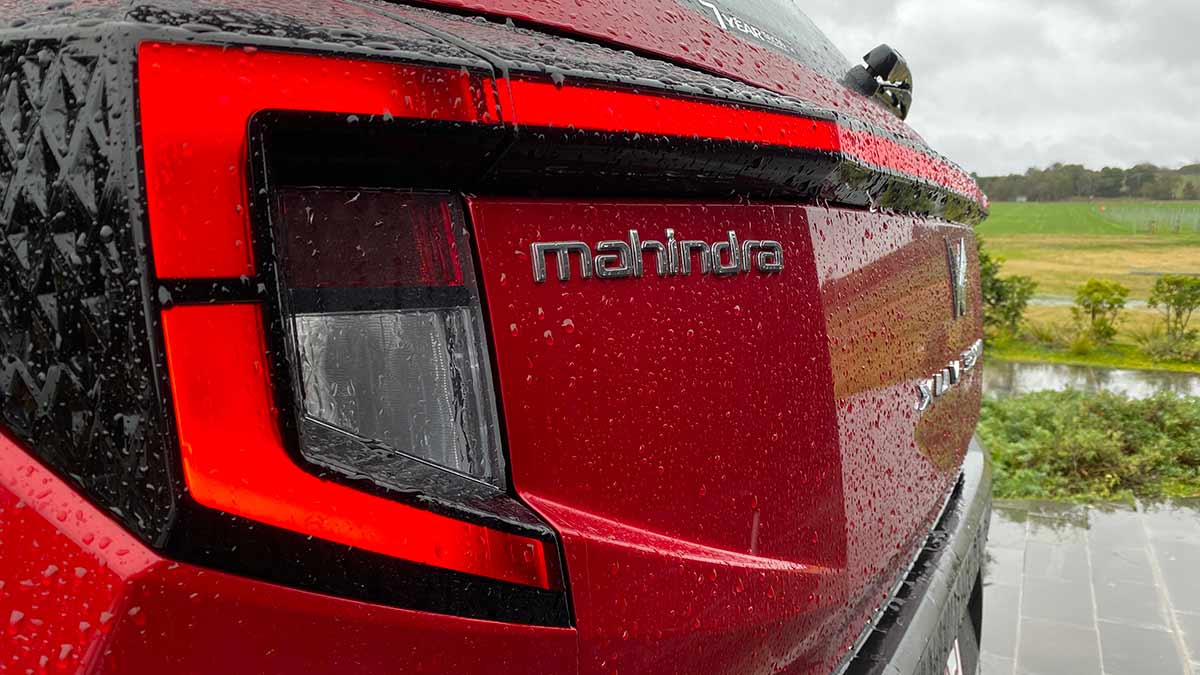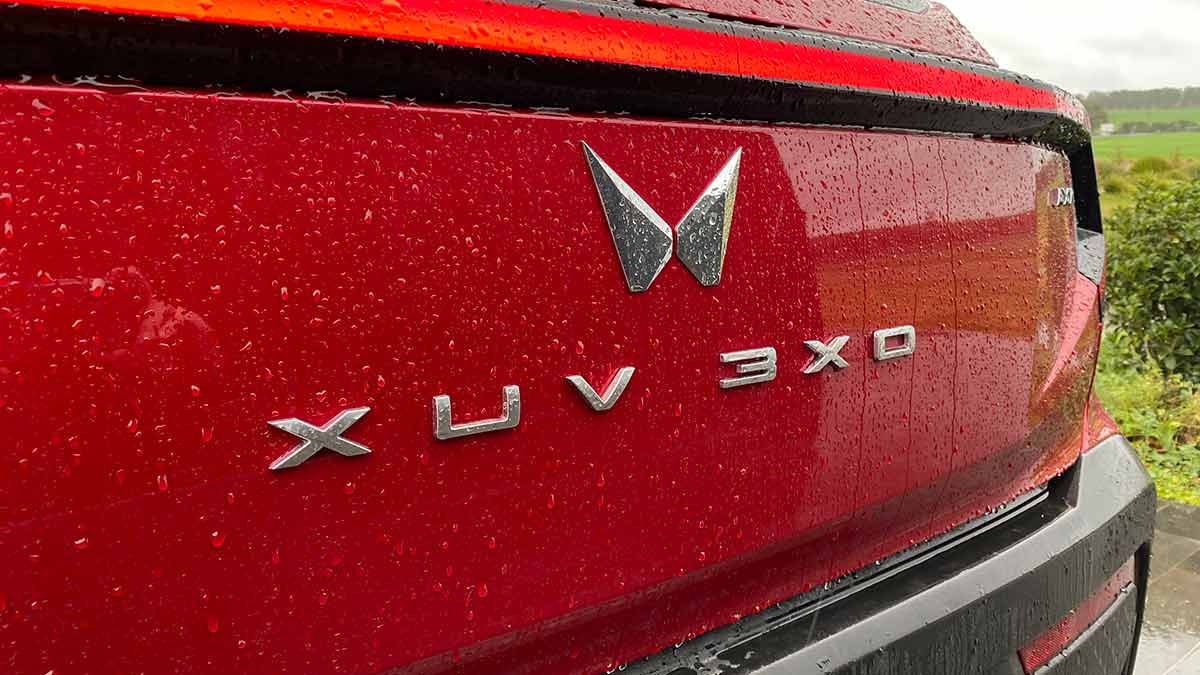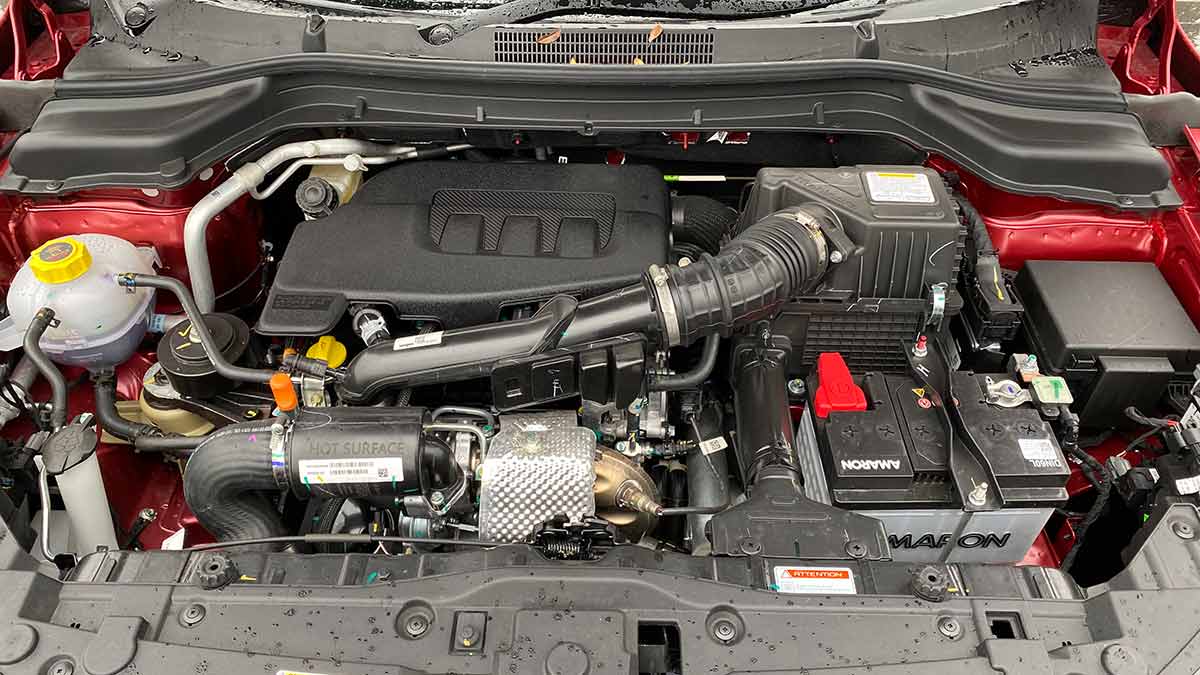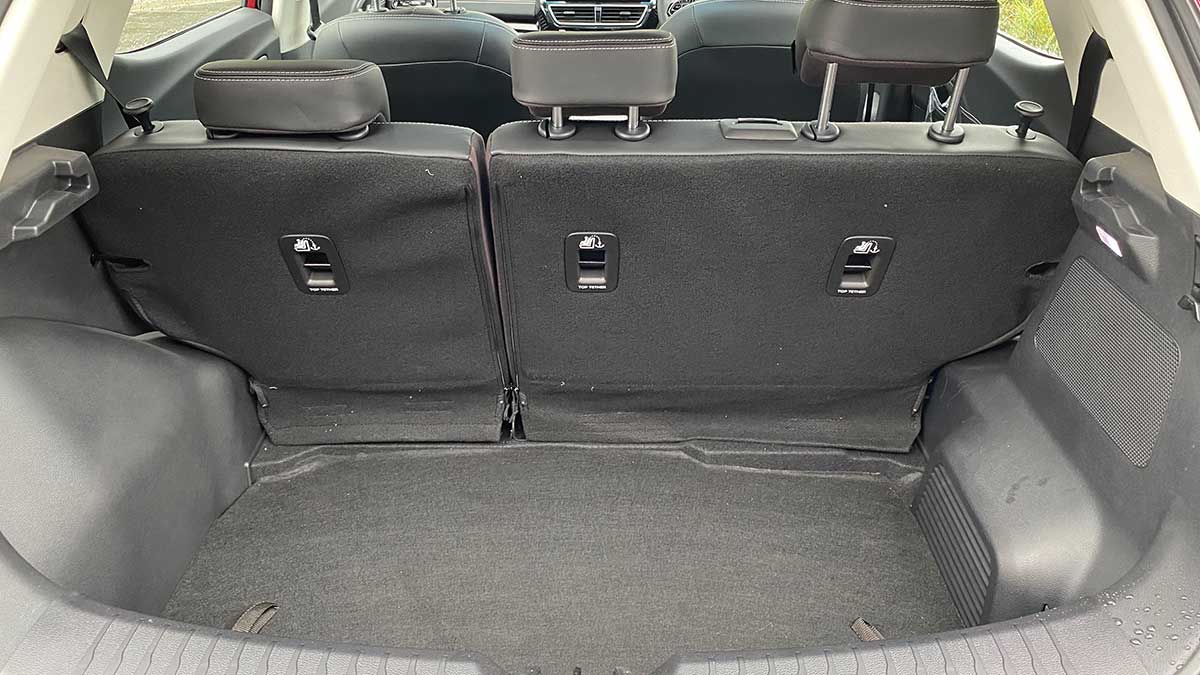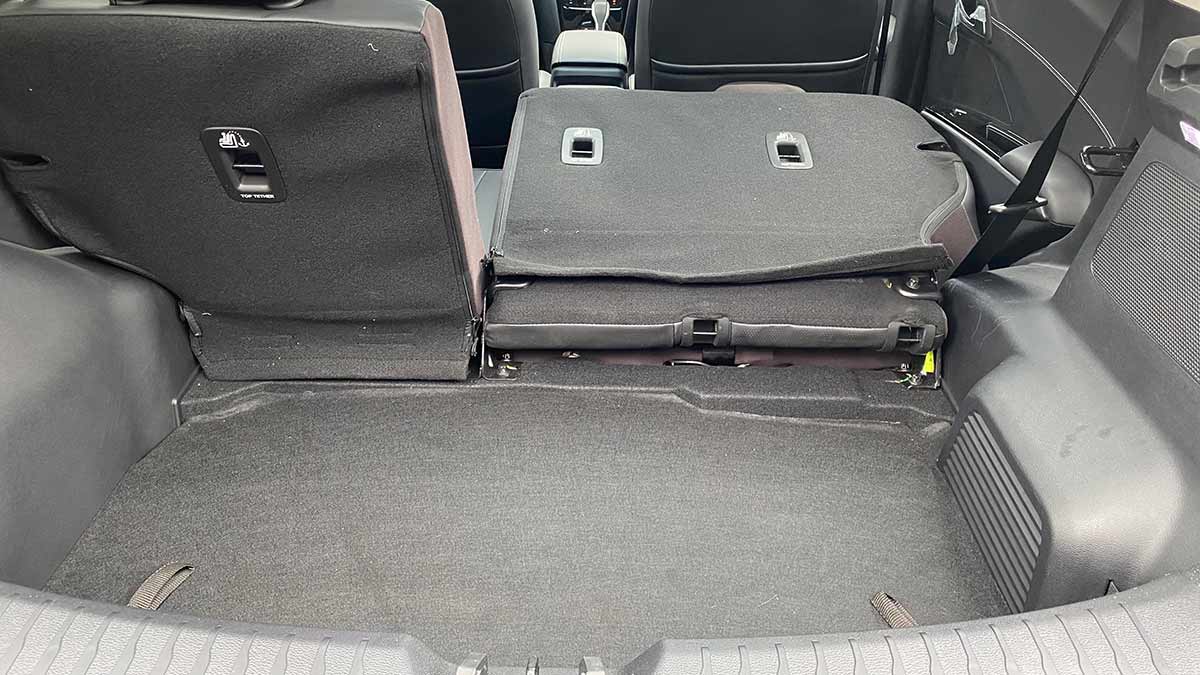Australians buy more SUVs than any other vehicle, so which are the cheapest and most affordable new small, medium, large 7-seater, off-road, hybrid and electric SUVs?
2025 Mahindra XUV 3XO review
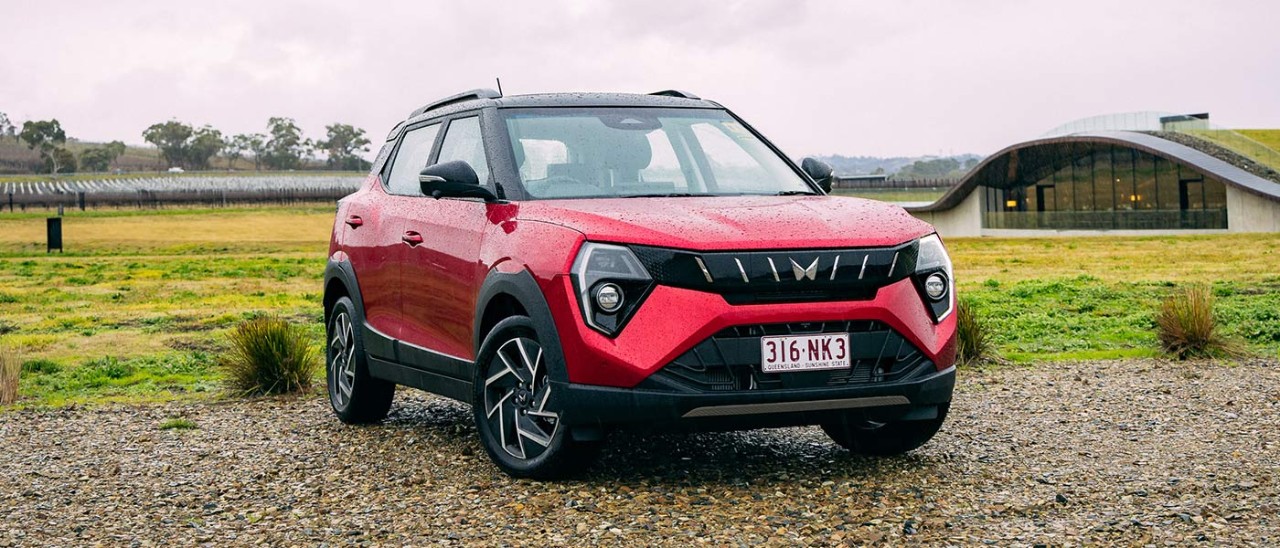
The Mahindra XUV 3XO small SUV is now on sale with sharp pricing and excellent packaging, making a strong case against the budget Chinese brand competition.
Small SUVs are big business in Australia and Indian brand Mahindra wants a piece of the action with its new 2025 Mahindra XUV 3XO.
The self-proclaimed “20-year-old start-up brand” is better known Down Under for its tractors and hardcore 4x4 wagons and utes, but Mahindra is now aiming to draw in a younger, metropolitan crowd with the 3XO – a light five-seater crossover with high equipment levels and a low starting price below $24,000.
That makes the 3XO a compelling new entrant next to the fast-growing budget Chinese brands (think Chery, MG, GWM Haval) and popular light-duty SUVs from the likes of Mazda, Toyota, Hyundai and Kia.
Let’s see whether the world’s largest tractor company has covered enough bases to shift your attention to its cute new contender.
On this page
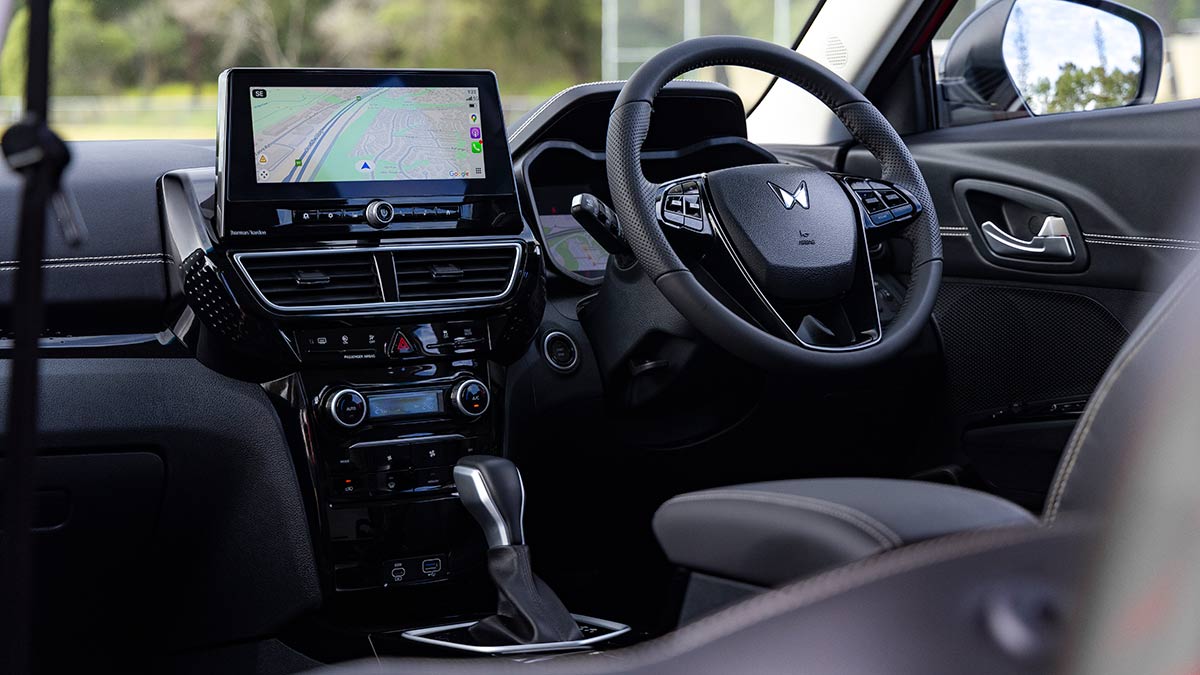
In the flagship AX7L variant, the Mahindra 3XO has artificial leather upholstery and soft-touch trim on the dashboard and doors.
How much does the 2025 Mahindra XUV 3XO cost?
The 2025 Mahindra XUV 3XO is priced at the budget end of the small SUV segment, starting from $23,990 driveaway for the entry-level AX5L. A top-spec AX7L model is also available from $26,990 driveaway, while customers who order either car before August 31, 2025, will receive a $500 discount. At these prices, Mahindra’s new baby ‘light’ SUV, which is more like a high-riding hatchback than a towering presence on the road, is one of the cheapest on the market.
For the money, you get a comprehensive array of infotainment tech and creature comforts. Headline features fitted standard across the range include a 10.2-inch digital instrument cluster and centre touchscreen, the latter combining with wireless Apple CarPlay and Android Auto. A wireless smartphone charging pad is also provided.
The driver’s seat is height-adjustable, the windows and (foldable) exterior mirrors have electric adjustment and there are automatic functions for the headlights and windscreen wipers. The air-conditioning system has two temperature zones, rear air vents and feeds cool air into the glovebox, while the steering wheel is wrapped in leather and includes buttons for adjusting the six-speaker stereo and adaptive cruise control.
Keyless entry, push-button start, an electronic park brake, a novel ‘tyre position display’ and three selectable driving modes (the quirky Zip, Zap and Zoom instead of Eco, Normal and Sport) also point to the high specification for such a relatively low-priced car.
For a $3000 premium, the AX7L adds a panoramic sunroof, front parking sensors, LED front fog lights, black ‘leatherette’ seat upholstery (replacing black cloth in AX5L), soft-touch trim on the dashboard and doors, an auto-dimming rearview mirror, 65W USB-C fast-charging (in addition to USB-A) and a premium Harman Kardon stereo with 380W amplifier, subwoofer and an extra speaker.
The XUV 3XO carries a seven-year/150,000km factory warranty and has a six-year/85,000km capped-price servicing scheme available through Mahindra’s 70-plus national dealer network. The service intervals are every 12 months or 10,000km for the first service and yearly/15,000km thereafter. The price ranges from $279 to $399 per service, totalling $1994 over the period.
More: Australia’s best, affordable, new first cars for drivers in 2025
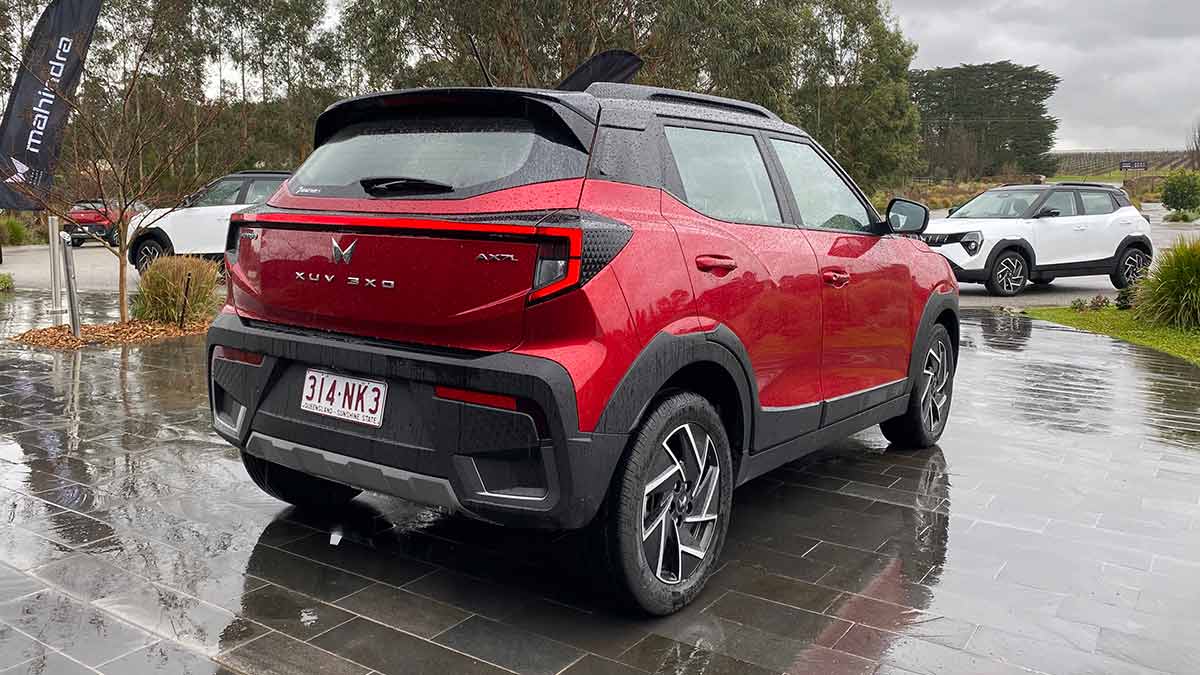
This AX7L version of the Mahindra XUV 3XO has optional Tango Red exterior paint and a standard Stealth Black roof.
2025 Mahindra XUV 3XO exterior design
It might come from a brand that established itself in Australia with blocky, rugged 4x4 off-road wagons and utes, but the 2025 Mahindra XUV 3XO is a softer, more contemporary touch at this end of the stable.
There are some bold design elements on the 3XO, such as the wide grille and bulging front and rear fenders, however the overall aesthetic has a modern feel with LED headlights and daytime running lights, rear LED light bar, ‘diamond-cut’ alloy wheels (17-inch in the AX7L, up from 16” on AX5L) and, on the top-spec variant, a premium-look black roof.
Roof rails are fitted on all cars and the exterior colour palette comprises white (standard) and three metallic options: grey, black and red, all adding $495 to the bottom line.
The XUV 3XO measures 3990mm long, 1821mm wide and 1647mm high, with a 2600mm wheelbase. That makes it a similar size to other light SUVs like the Chery Tiggo 4, Toyota Yaris Cross and the bestselling Mazda CX-3. Unlike many of its rivals, however, the 3XO does have a ride height of more than 200mm, which should come in handy on poorly surfaced roads.
What is the Mahindra XUV 3XO like inside?
The 2025 Mahindra XUV 3XO has more room than you might expect from its compact dimensions, offering excellent space in all directions for the front occupants and decent room across the back seat for such a small SUV. The panoramic sunroof in the AX7L we drove on launch also adds to the light and airy feeling inside.
Most drivers should be able to get comfortable, despite the absence of steering wheel reach adjustment, and will appreciate the seat’s high-mounted positioning and reasonable support. There’s manual seat height adjustment (no electric adjust) and easy-to-reach dash controls that are welcome in an age where many basic functions are consigned to the touchscreen.
There’s some time wasted using the main screen when switching from certain vehicle functions (such as drive modes) to Apple CarPlay, and the tinkling indicator chime wears thin after a while. Some drivers will also rue the absence of an overhead vanity mirror behind the sun visor (the front passenger gets an illuminated mirror), but we’re nitpicking here. Digital radio and integrated satellite navigation are perhaps bigger omissions on the up-spec AX7L.
The rear seat area is better suited to two passengers, who can take advantage of the fold-down centre armrest (with integrated cupholders), seatback pockets, overhead reading lights on the side trim and door bins with space for a bottle. Rear air vents behind the centre console are appreciated, perched above a USB-C charging point and a slot to hold a mobile phone. A lower-mounted 12V outlet is also provided.
Soft door trim extends to the second row, too, but only in AX7L; such niceties are not included on the cheaper AX5L. All models have mountings for two ISOFIX child restraints and three top tether strap points.
Further astern, the good impressions start to wane. An awkward manual tailgate release button provides access to the cargo area, where there’s a flimsy floor piece and, on our test car, some ill-fitting trim and hard plastics that were already showing signs of wear. The floor itself is mounted low to maximise space (364 litres to the roof), which requires bending down to lift heavier items, and the 60/40-split rear seatbacks leave an impractical big step when folded rather than anything resembling a flat floor.
There’s no retractable luggage blind fitted standard, no 12V power outlet and just a couple of elastic straps to secure small items in the boot. A space-saver spare wheel is included. Some drivers on the media launch also reported hearing some unidentifiable rattles, including in the luggage compartment.
More: Hatch vs small SUV: what’s the difference and which is best?
Is the Mahindra XUV 3XO good to drive?
In keeping with its budget orientation, there’s no hybrid or electric powertrain option with the 2025 Mahindra XUV 3XO, which instead relies on a small 1.2-litre three-cylinder turbocharged petrol engine.
The tiny turbo-triple produces 82kW of power and 200Nm of torque across a 1500-3500rpm range, driving the front wheels via a six-speed automatic transmission. Mahindra claims the 3XO consumes 6.5L/100km on the combined test cycle (helped by the inclusion of a switchable automatic engine idle-stop system), which is not too far from the 7.5L/100km we averaged on our 140km launch drive from the Albert Park Grand Prix circuit in Melbourne to the Yarra Valley and back. These figures come with using the recommended premium unleaded fuel, although the 3XO will run on regular unleaded.
The engine is smooth and proves sufficient for city running and undemanding conditions, which for most people will be enough. It does lack responsiveness at low rpm when cruising and at the top end of the rev range when the driver asks for more, whether it’s in the cut and thrust of peak hour traffic or during an overtaking move. This applies in the rather misleading Zoom driving mode (and Zip and Zap, for that matter), which doesn’t seem to make much difference to the engine’s characteristics, and on a winding uphill stretch on our drive the 1410kg 3XO AX7L felt underpowered with just a single occupant – something that doesn’t bode well for times when there are more bodies and luggage onboard.
A more powerful petrol engine is available overseas but was ruled out for Australia due to the New Vehicle Efficiency Standard (NVES) now in force here. Mahindra has EVs in its pipeline, but there’s no hybrid or battery-electric powertrain slated for 3XO at this stage.
According to Mahindra, 3XO development testing in Australia fed into the tuning of its suspension, which is based around a standard MacPherson strut (front) and torsion beam (rear) design. The result is a car that’s adept at soaking up broken bitumen and small potholes, proving comfortable and well controlled but not as accomplished as rivals such as the Kia Stonic. It handles well and the light steering and tight 10.6m turning circle makes for easy manoeuvring around the ’burbs.
Rain-soaked Melbourne roads brought some unwelcome axle tramp from a standing start at intersections and road noise was intrusive at times. Overall, though, the 3XO is comfortable to drive in a relaxed fashion, just not as inspiring as Mahindra would have us (and you) believe.
What safety features does the Mahindra XUV 3XO have?
The 2025 Mahindra XUV 3XO is fitted with six airbags – dual front, front side and a head-protecting curtain airbag front and rear – and a range of advanced driver assistance systems (ADAS). These include adaptive cruise control (with stop-and-go), lane departure warning, lane keep assist, autonomous emergency braking (with pedestrian detection), forward collision warning, tyre pressure monitoring, automatic high beam and traffic sign recognition.
On our drive, the lane keeping systems were reasonably well calibrated, but the camera often failed to pick up traffic signs and was prone to delivering inaccurate speed limits. “Check speed limit” warnings were frequent, even when driving at low speeds, while “Stop!” warnings when sitting at traffic lights also proved annoying with what seemed to be an overreaction to surrounding traffic.
All models have a 360-degree surround view camera and a display in the driver’s instrument panel that shows the car’s flanks when the indicators are engaged. That said, there’s no blind spot monitor to warn of cars approaching from behind, and no sign of a few other significant safety features like rear cross traffic alert and an extra airbag in between the front occupants.
There is also a blank switch in the front overhead console where other markets include an emergency call button, which is an important safety feature that’s becoming more common in Australia. Mahindra says it’s planning to introduce eCall in future models, but it’s not expected on 3XO in this current generation.
The Indian carmaker concedes the XUV 3XO is unlikely to achieve a maximum five-star ANCAP safety rating under the forthcoming 2026 testing protocols and that it’s working on changes to bring the SUV up to that mark. Specific details are still being kept under wraps and Mahindra senior management has admitted that the revisions are likely to push up the car’s price.
More: What is eCall and how crash detection technology can save lives
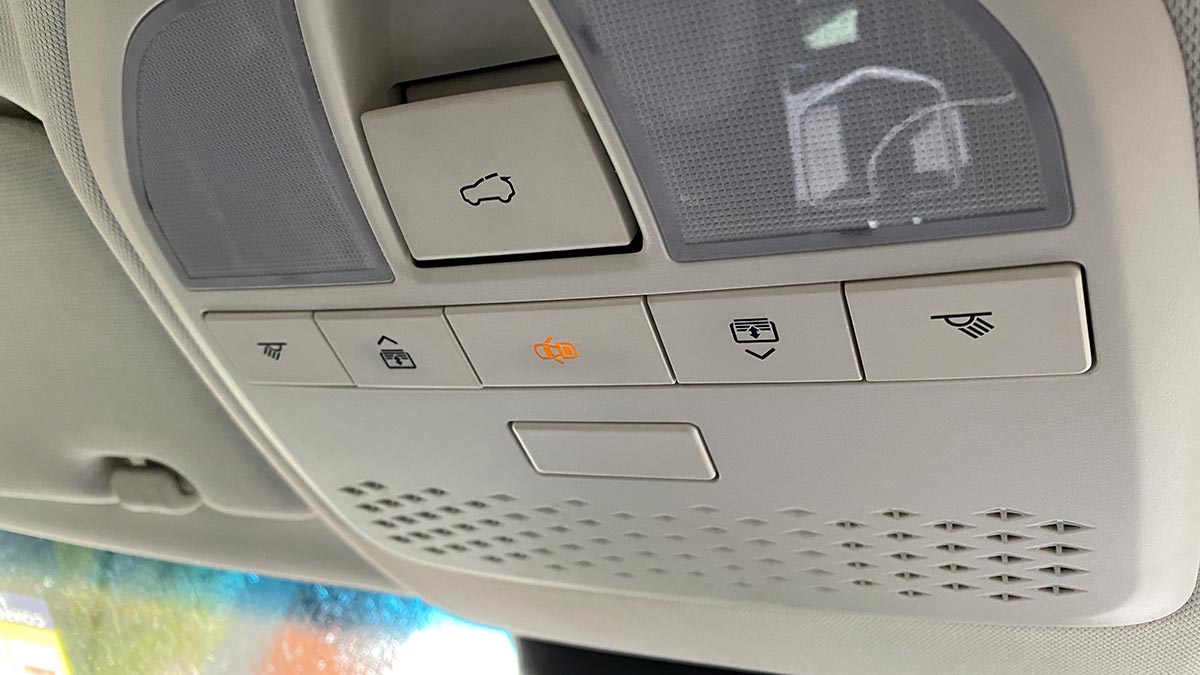
There is a blank button in the Mahindra 3XO that is used for an emergency call system in overseas markets, but not Australia at this stage.
How does the Mahindra XUV 3XO compare?
At $23,990 driveaway (or $23,490 until August 31), the 2025 Mahindra XUV 3XO delivers quite a statement in the overall small SUV class and the Indian brand is aiming to become one of the top five contenders among the popular ‘light’ SUVs.
The current segment leader is the Mazda CX-3, which is much more expensive at $32,990 driveaway for private buyers in Victoria, while other prominent players include the Toyota Yaris Cross Hybrid (from $36,135), Kia Stonic (from $28,290) and Hyundai Venue (from $25,990).
Perhaps the 3XO’s closest rival is the Chery Tiggo 4, which carries the same headline opening price ($23,990 driveaway) and has lots of standard equipment to go with it. Along similar lines but with slightly bigger dimensions, the GWM Haval Jolion is currently available from $24,990 and the MG ZS starts at $25,990 (both driveaway).
More: The best affordable SUVs in Australia for 2025
Should I buy a Mahindra XUV 3XO?
Many Australians are putting their faith in relatively unknown brands that are offering new cars at a price that might otherwise see them buying second-hand. That’s often a response to cost-of-living pressures and understandable when the offer looks so attractive on paper.
In that context, the 2025 Mahindra XUV 3XO deserves to be considered alongside its predominantly Chinese brand competition. On price, equipment, packaging, warranty provisions, servicing costs and the basic drive, the 3XO leaves a positive first impression.
Some of its rivals have better all-round performance but cost more, too, so if the budget can’t stretch that far we’d suggest that Mahindra’s new tiny tot should at least be on your radar.
The information provided is general advice only. Before making any decisions please consider your own circumstances and the Product Disclosure Statement and Target Market Determinations. For copies, visit racv.com.au. As distributor, RACV Insurance Services Pty Ltd AFS Licence No. 230039 receives commission for each policy sold or renewed. Product(s) issued by Insurance Manufacturers of Australia Pty Ltd ABN 93 004 208 084 AFS Licence No. 227678.
